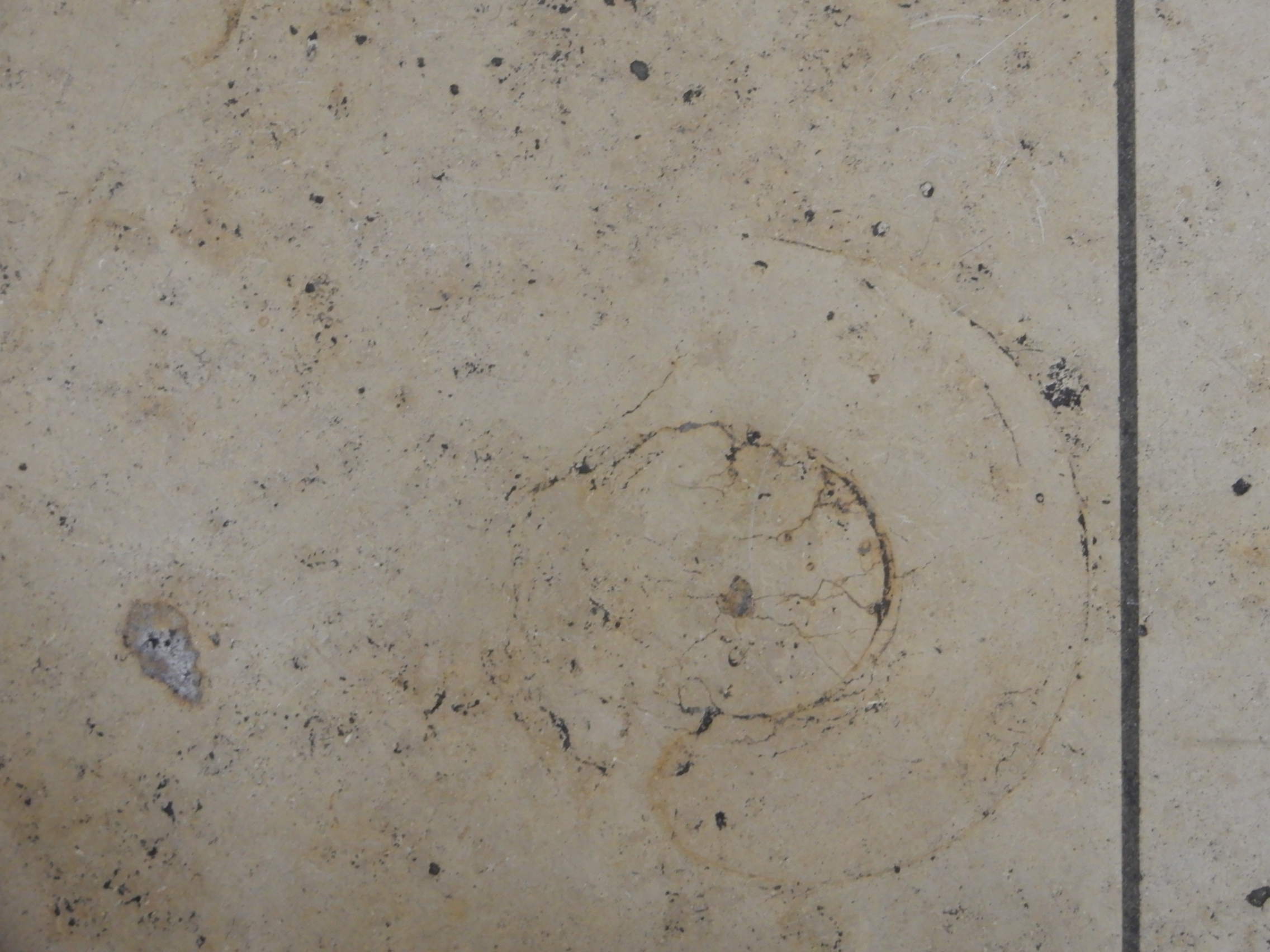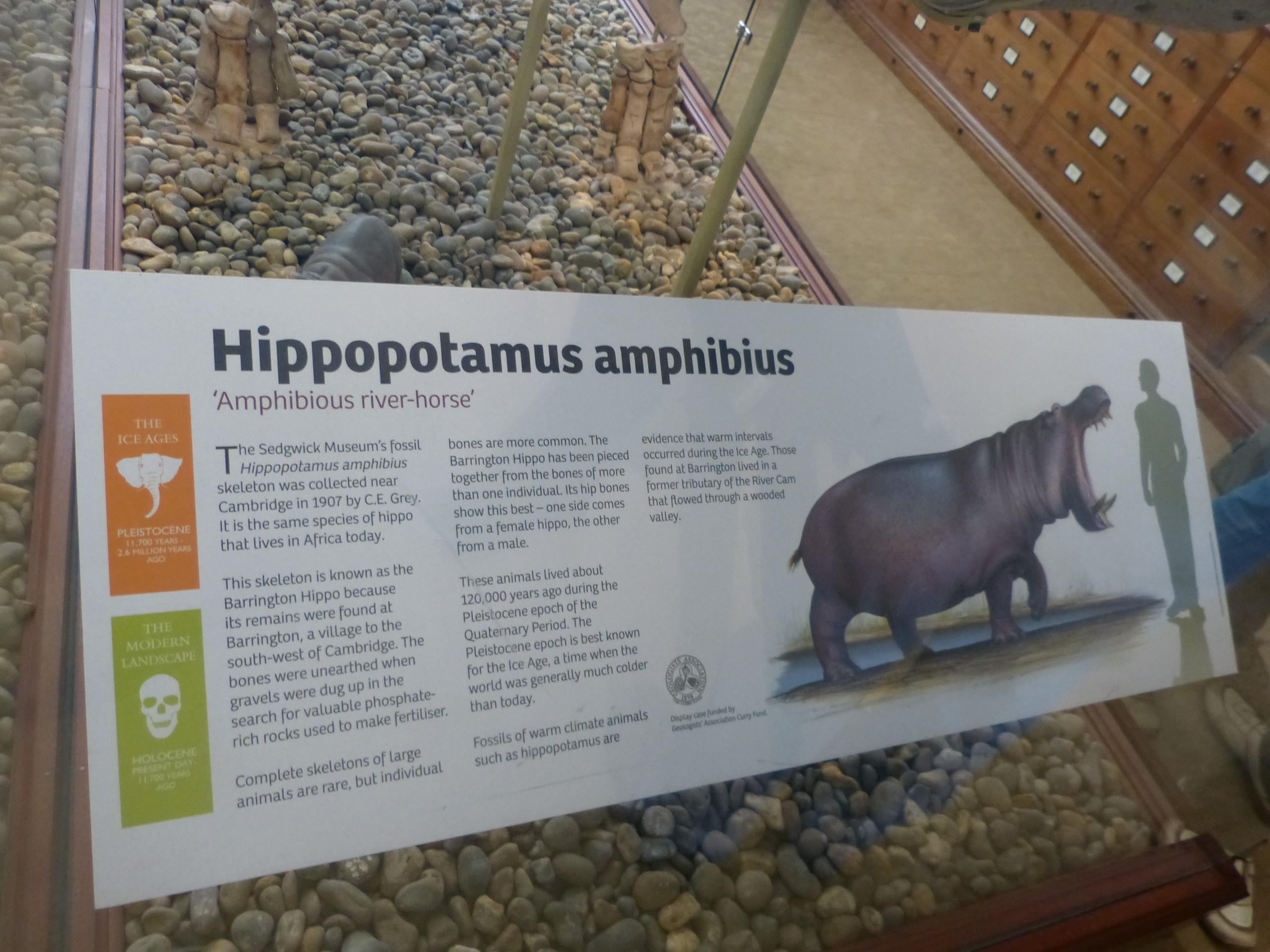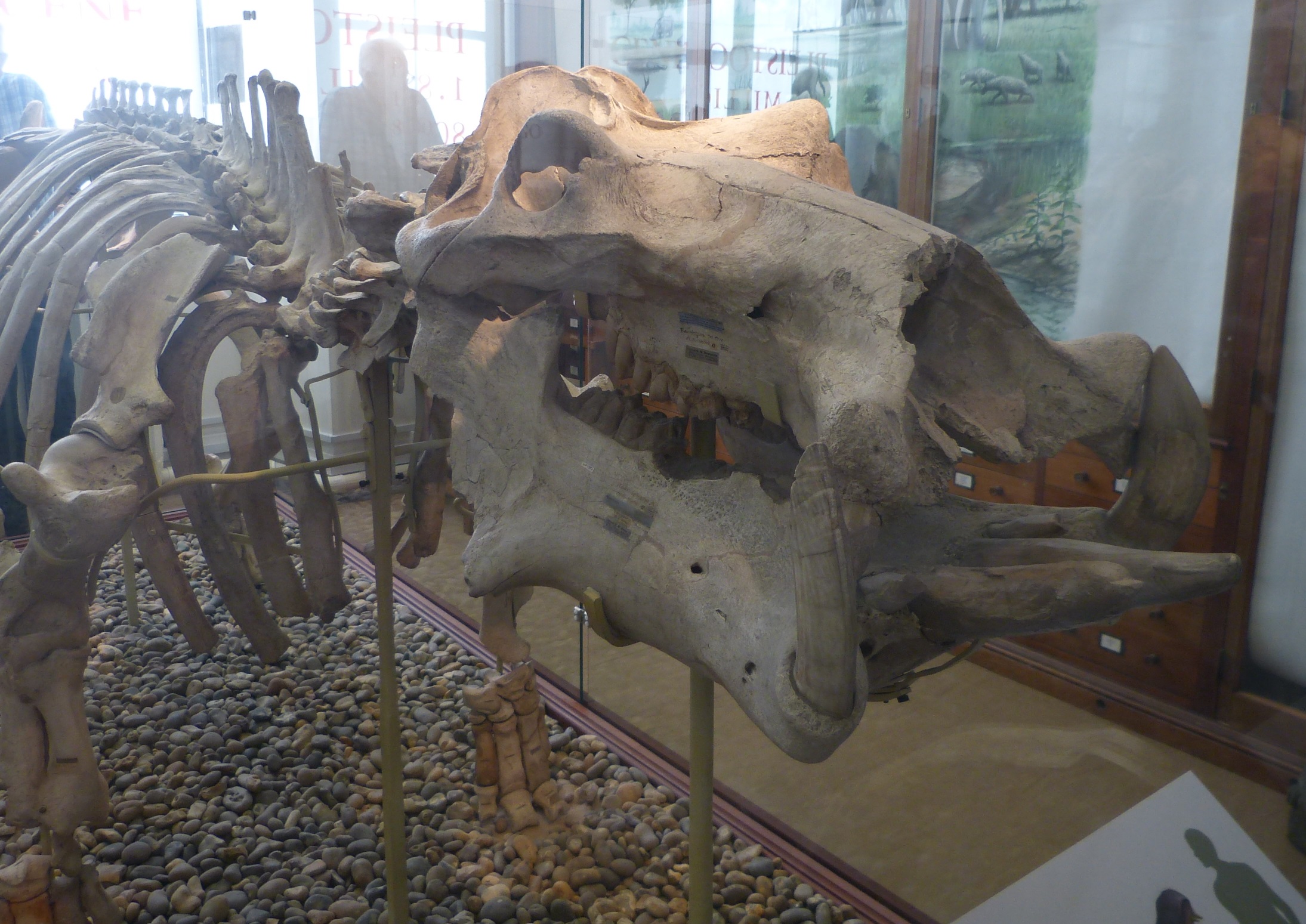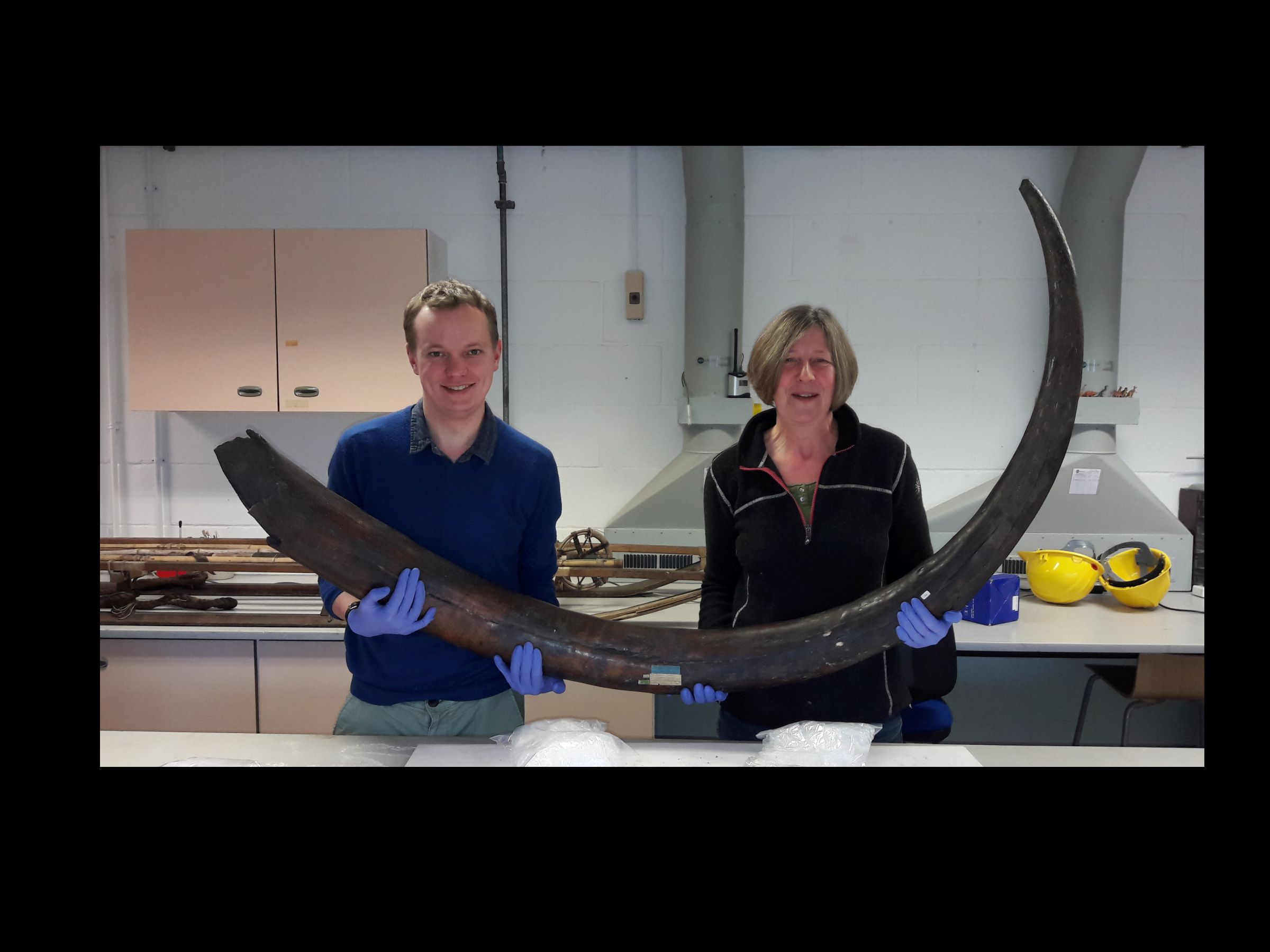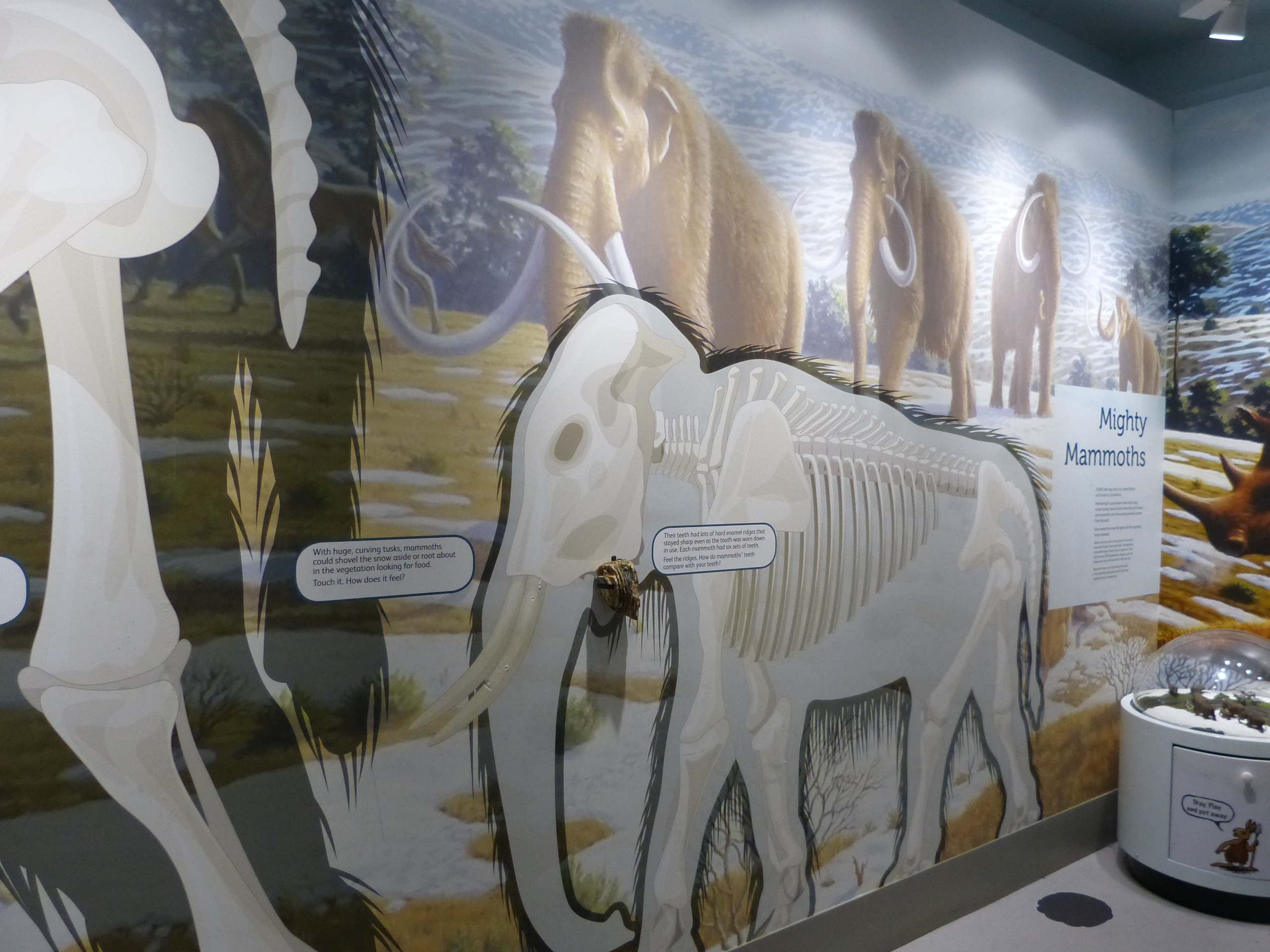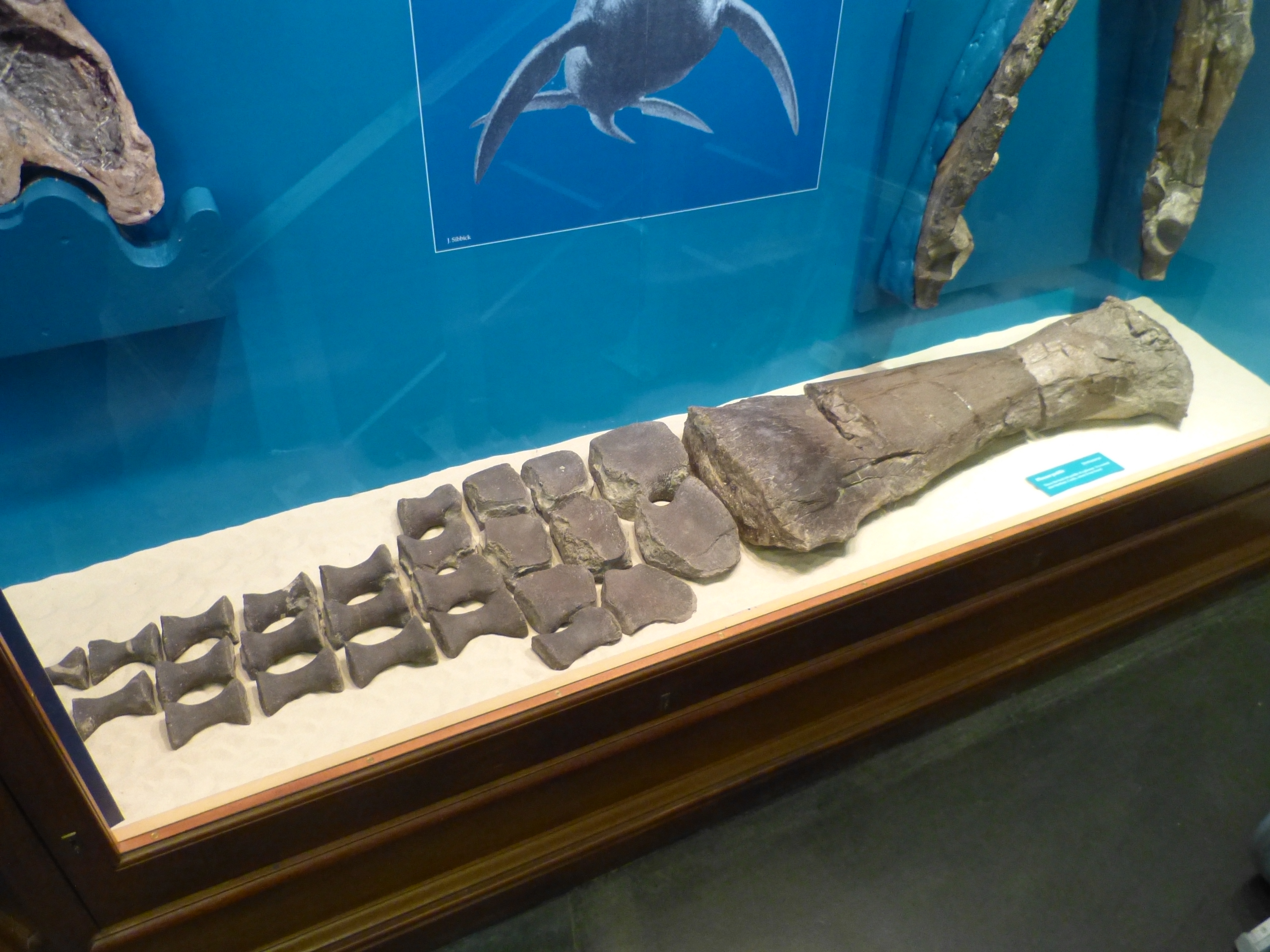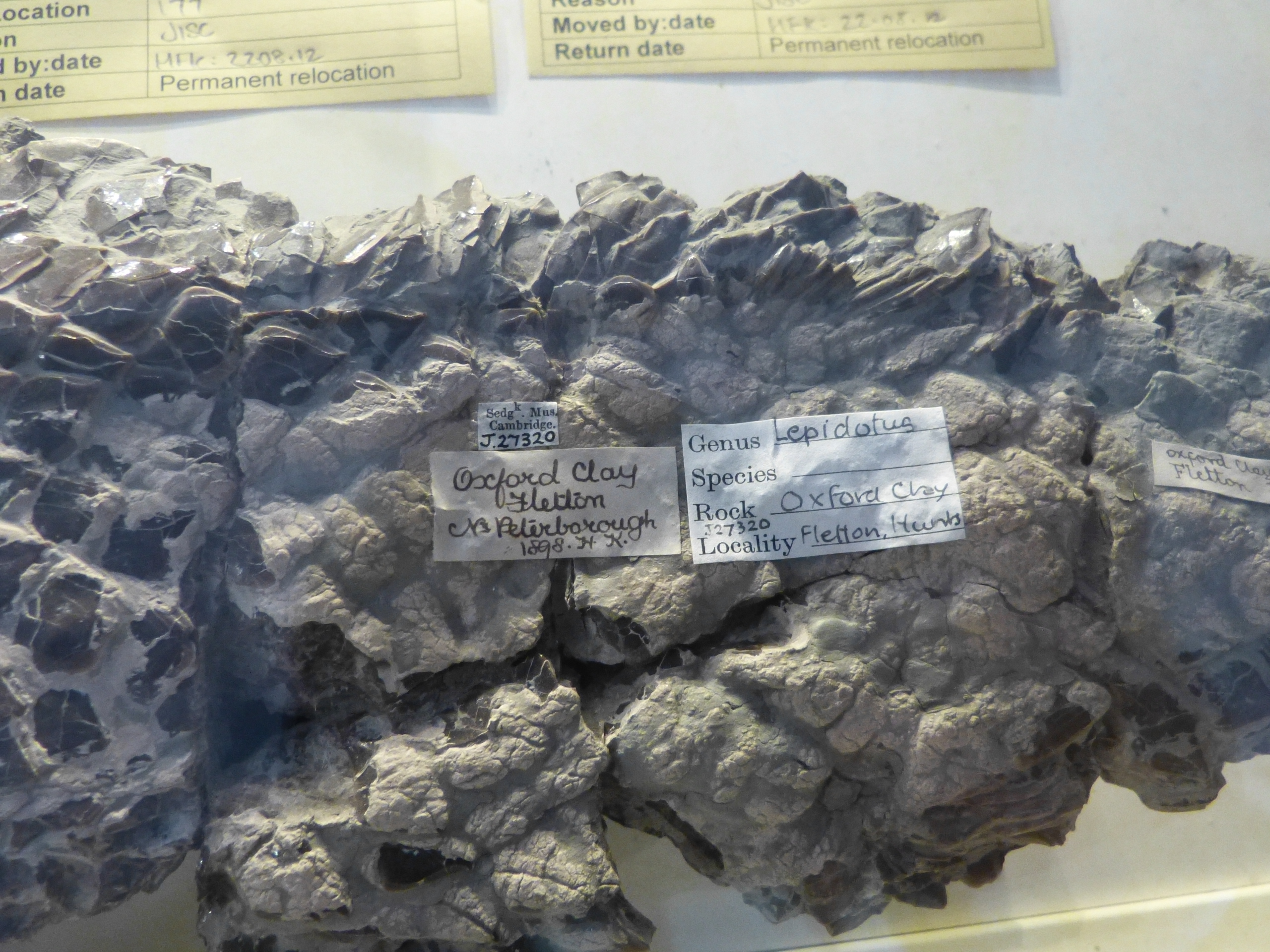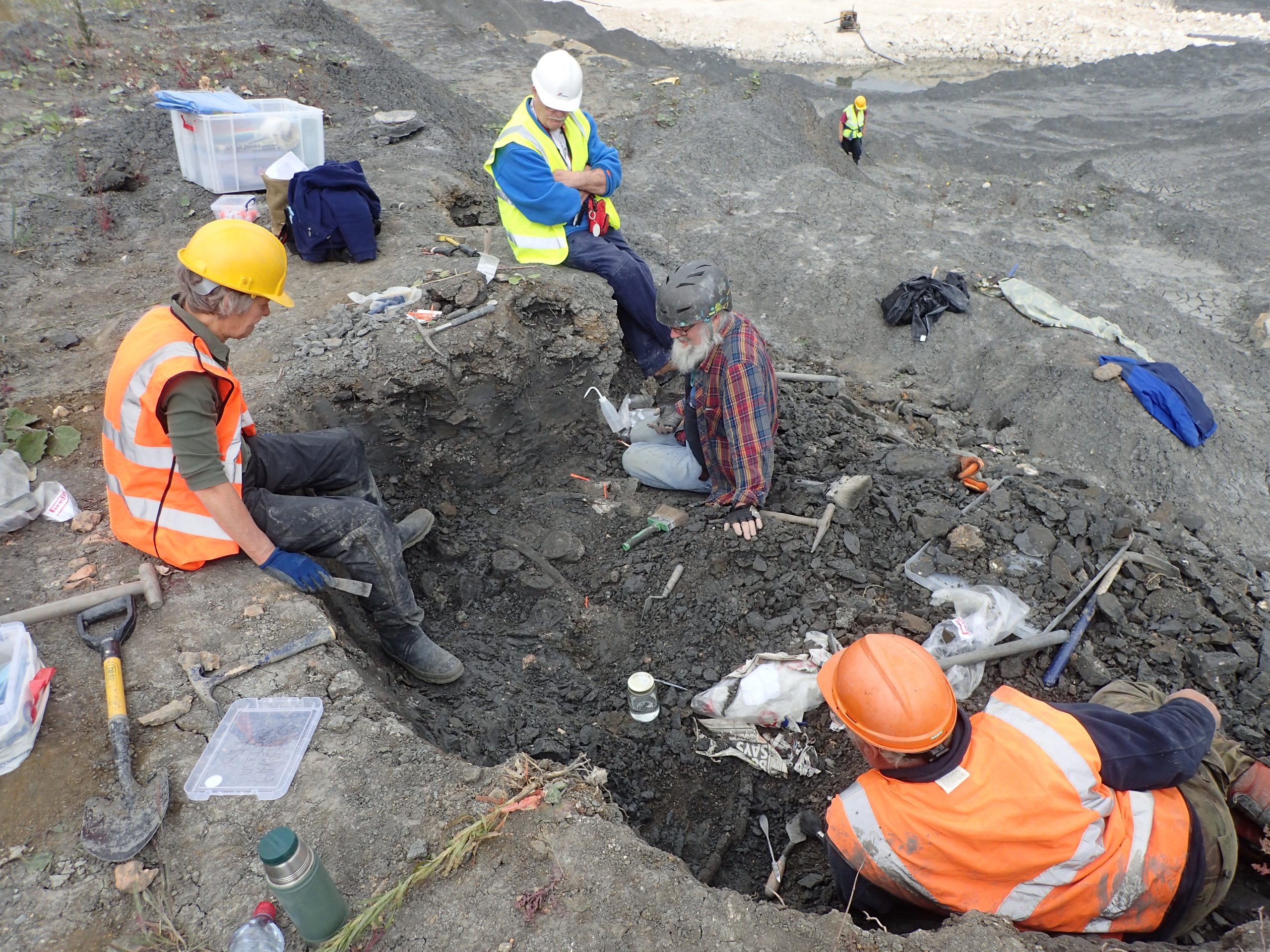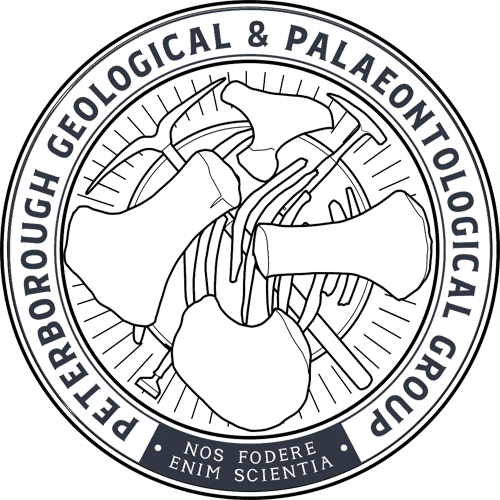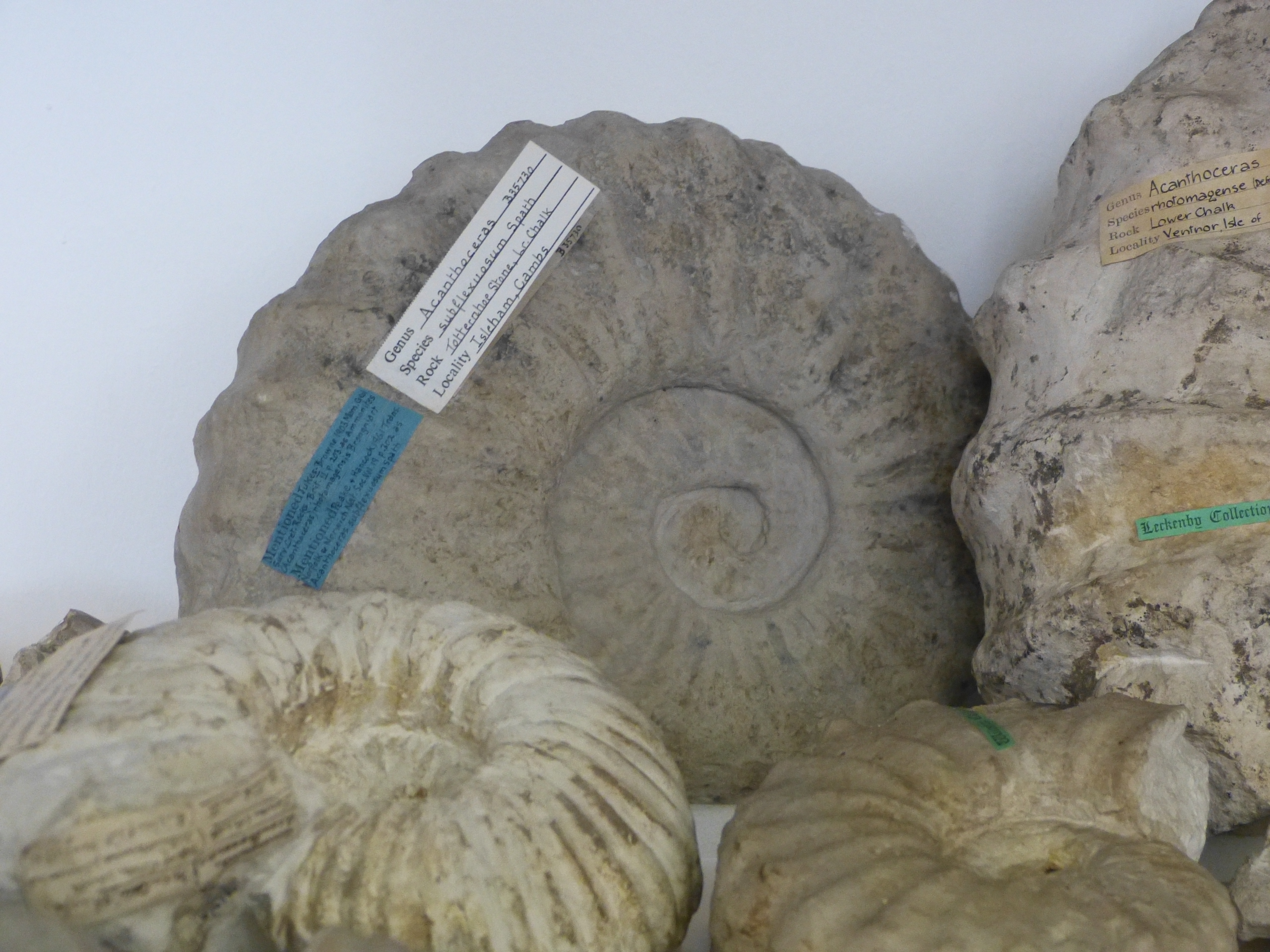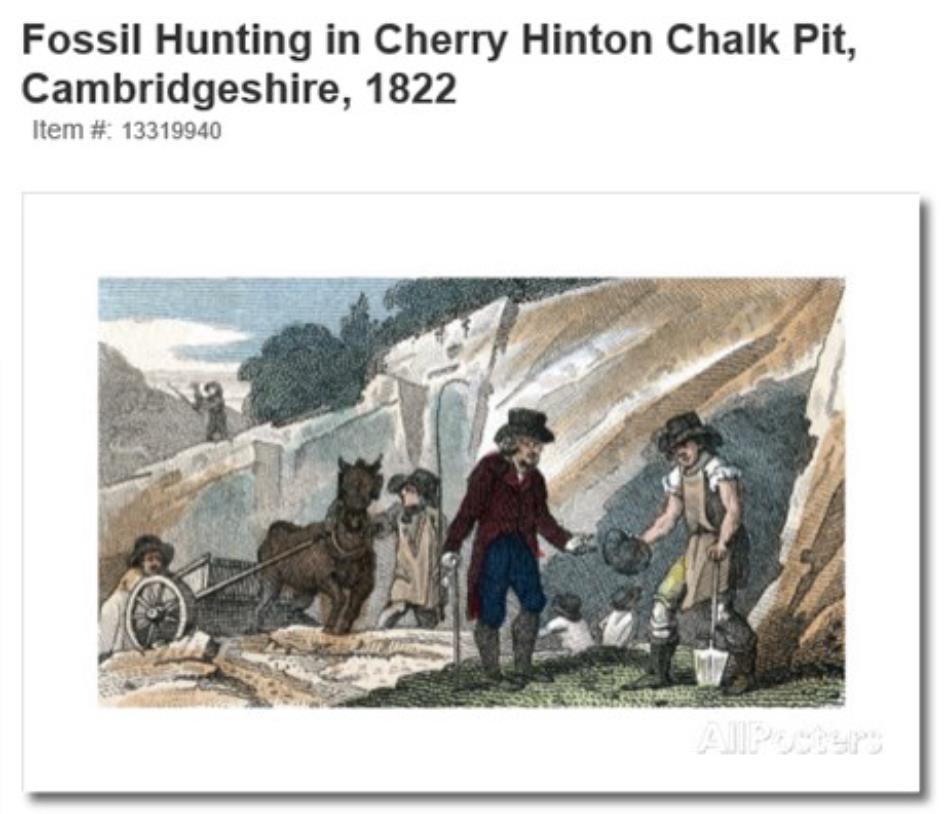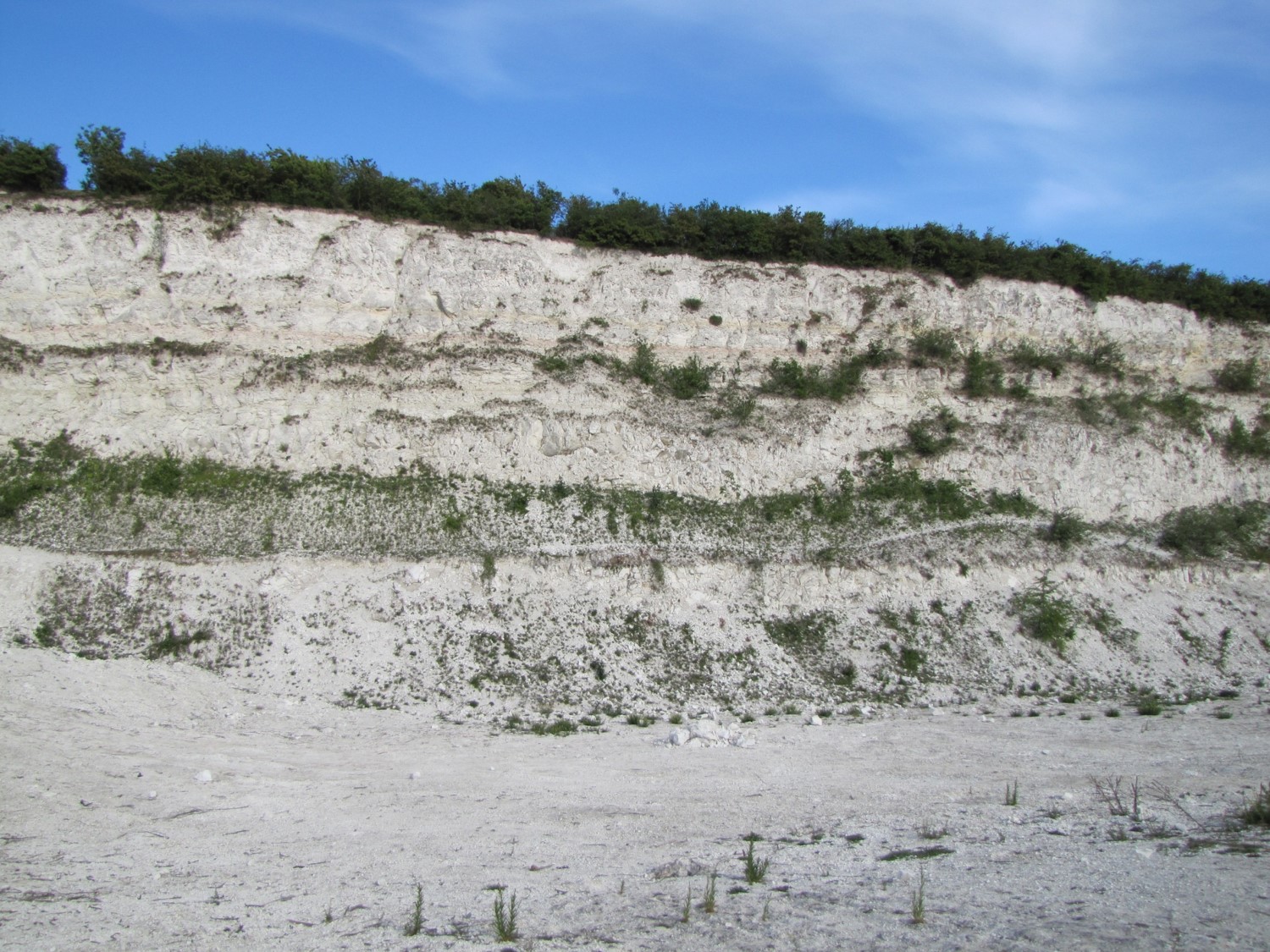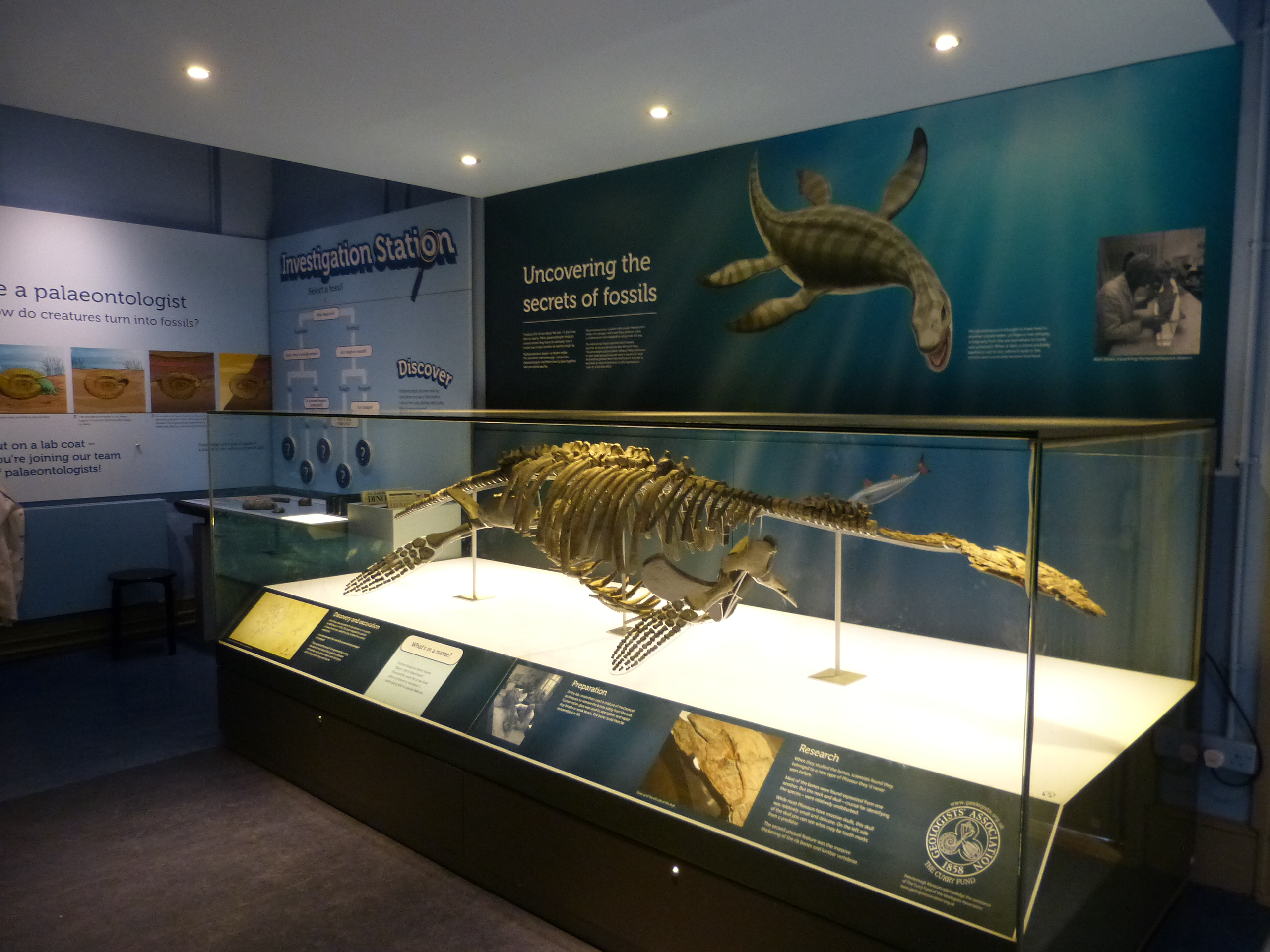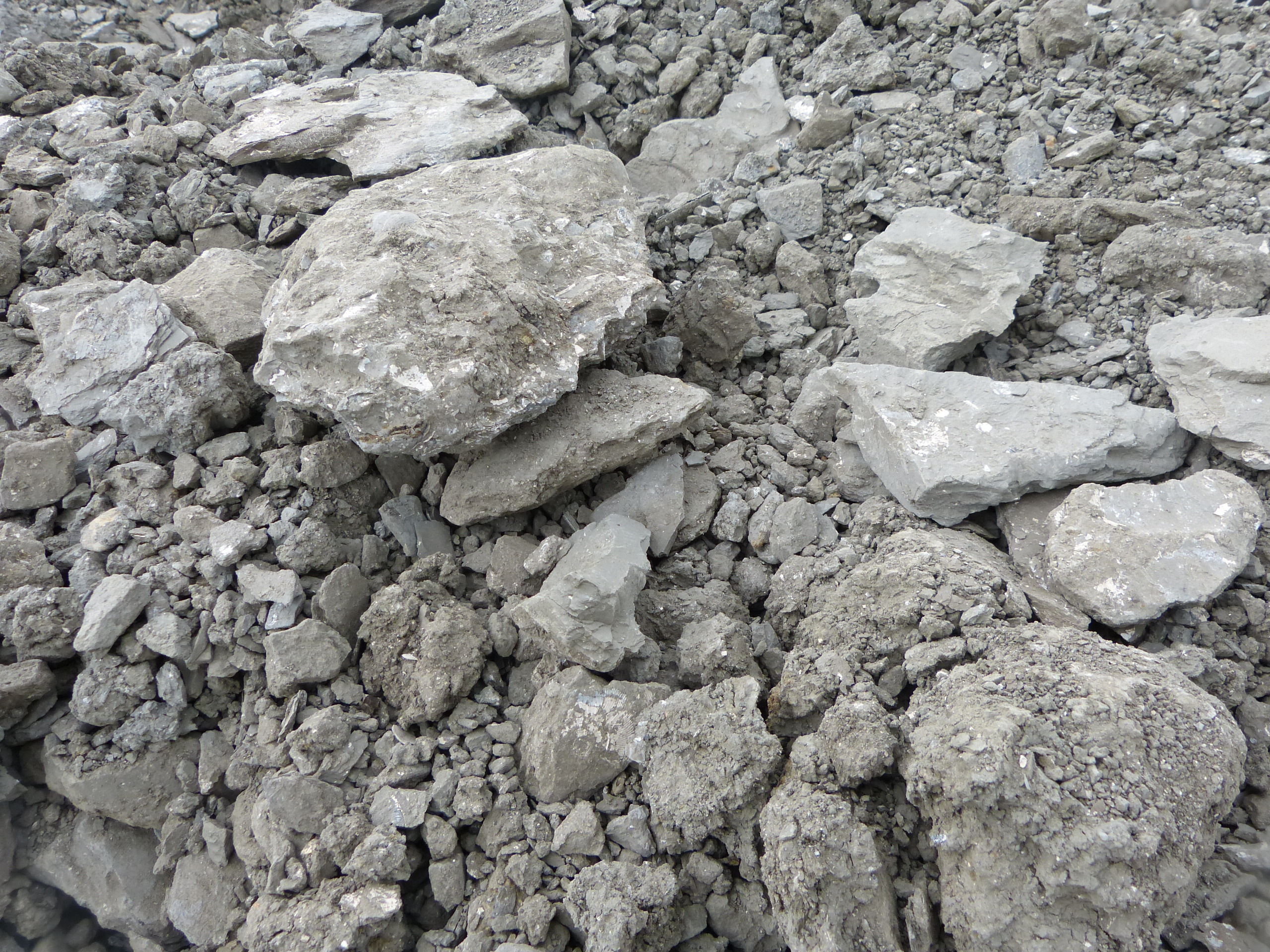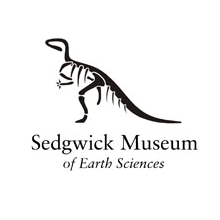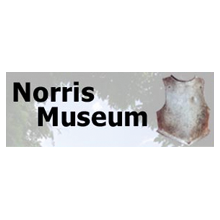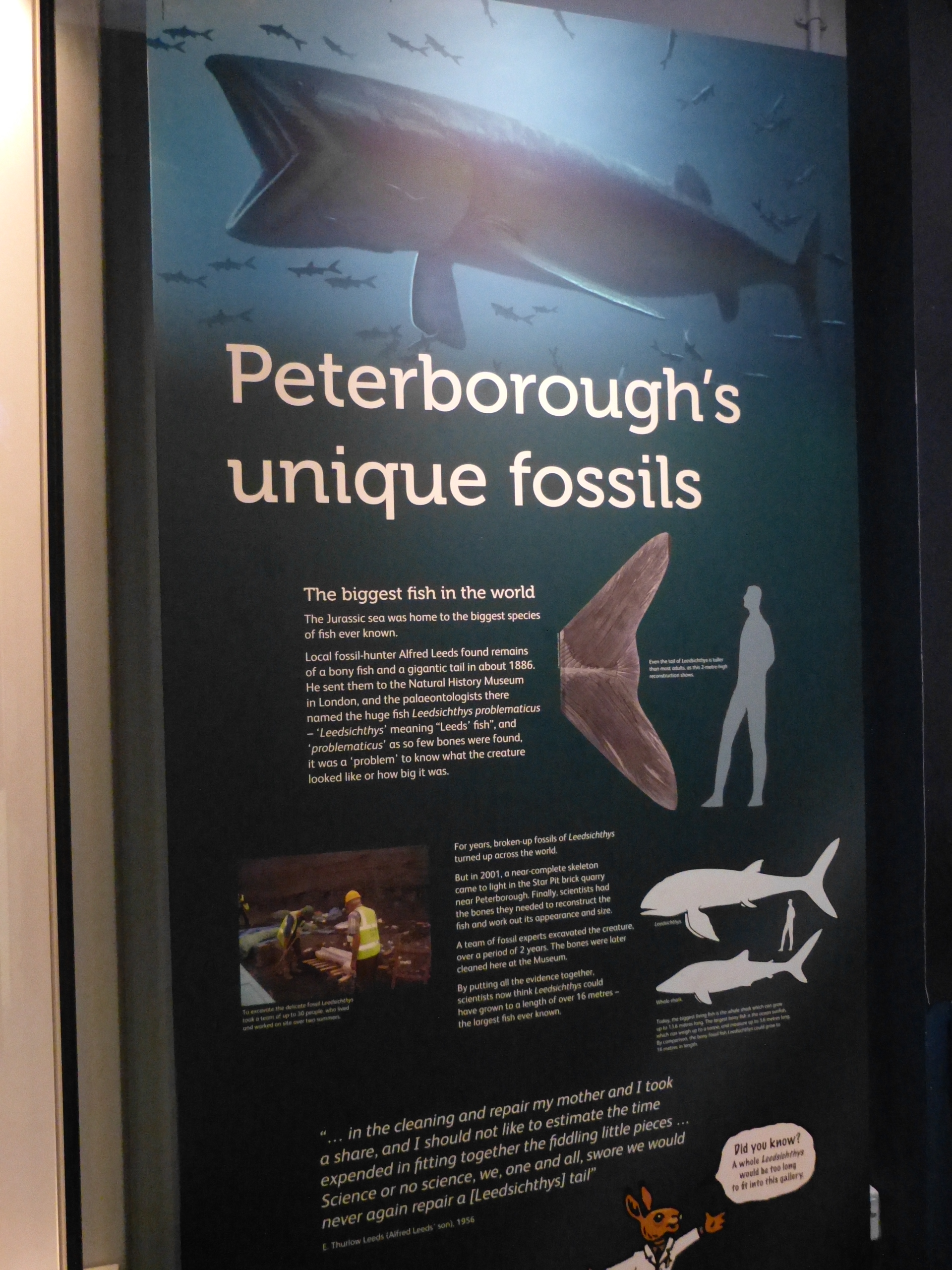
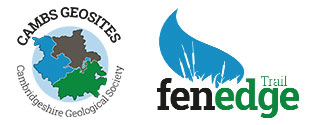
Cambridgeshire’s fossils
Fossils found in the county include many very important discoveries – from huge, ancient marine reptiles and giant ammonites from millions of years ago (the Jurassic and Cretaceous Periods) to impressive mammoth tusks and hippo skulls from the recent (Pleistocene) Ice Age.
Pleistocene fossils
Due to the extensive deposits of River Terrace and other gravels in Cambridgeshire, there have been some amazing discoveries of fossils from both cold and warm periods of the Pleistocene ‘Ice Age’. Many (such as mammoth tusks) date from the last glaciation (the ‘Devensian’) when the region experienced tundra conditions but others (such as hippo skulls) date from the earlier warm phase (the ‘Ipswichian’). Others date from even earlier glaciations or warm periods.
Our local museums have excellent displays on the Pleistocene Ice Age, its geology, environments and fauna, with some impressive fossils – many of which have been found locally.
Ice Age display, Sedgwick Museum – mammoth tusks now in the Sedgwick
Cretaceous and Jurassic fossils
The bedrock at or near the surface in Cambridgeshire is sedimentary rock of Cretaceous and Jurassic age – with many of the beds being famous for their fossils. This includes the Oxford and Kimmeridge Clays (Jurassic) and the Cambridge Greensand and Chalk (Cretaceous).
Of particular note are the finds of large marine reptiles such as Plesiosaurs (including Pliosaurs) and also Icthyosaurs. Some of these are of international significance as are the fossils found of the large Jurassic fish, Leedsicthys.
Ammonites are common in much of the Jurassic clays and in the Chalk and have proved to be a good stratigraphic indicators, especially in the Chalk. This is due to their relatively fast rate of speciation that assists in the dating of the horizons. A very large ammonite (almost a metre across) was found in East Pit at Cherry Hinton some years ago. The site is now a Local Geological Site (Note: it is no longer possible to collect fossils there other than those from the relatively small pieces of Chalk that lie by the side of the footpath). .
The Stretham Pliosaur – some remains can be seen in the Sedgwick Museum in Cambridge
The Leedsicthys Big Jurassic Fish project at Peterborough Museum
The Jurassic at Peterborough Museum
The Peterborough Geological and Palaentological Group are experts in excavating fossils from the Jurassic.
King’s Dyke Nature Reserve in Peterborough allows collecting of fossils from the Jurassic Oxford Clay. The collecting is done from clay removed during the industrial excavations and moved to an accessible and safe area.
If you do collect fossils please ensure that you do so ethically.
Other places to see fossils
You can see fossils in the many building stones. Both Cambridge and Peterborough City Cnetres have many building stones that contain fossils. Some of these are within locally sources stones (such as limestones or Chalk) but many are in ‘exotic’ stones brought from other regions or countries (particularly limestones e.g. from France).
